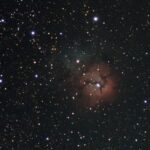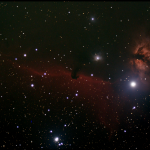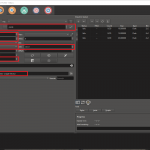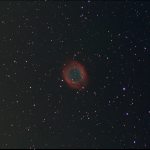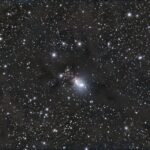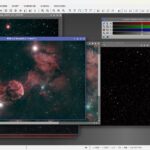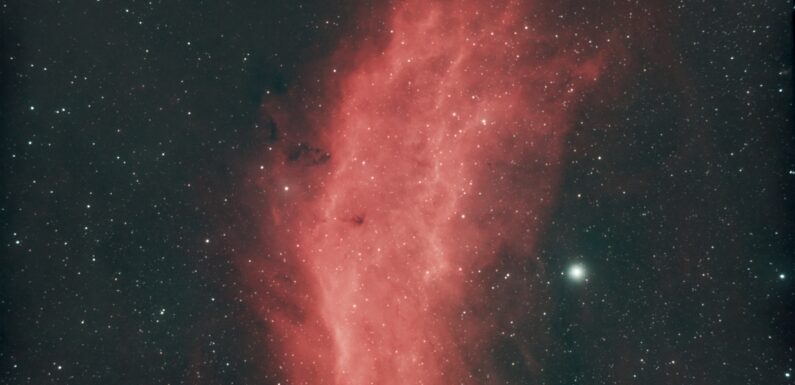
Hope everyone had a great Thanksgiving. The day after Thanksgiving was partly/mostly cloudy most of the day but the Clear Outside Forecast was calling for the sky to clear up just after dark and it did, mostly. A few thin clouds here and there, but for the most part a nice clear and cold night. I decided to have a go at the California Nebula, NGC 1499. I have captured some light from here during an EAA session but have not done any long exposure sessions on this dim emission nebula.
NGC 1499, the California Nebula, is an emission nebula located in the constellation Perseus. This large emission nebula is only about 1000 light years from Earth.
I switched out the SVBONY Tri-Band filter for the ZWO Duo-Band filter. I set up the NINA Sequence to run for 6 hours. After dark I did a polar alignment and ran the autofocus routine manually a few times to get the focus dialed in with the new filter. The skies were pretty clear around 7 PM so I kicked off the sequence.
| Primary (Imaging) | Secondary (Guiding) |
|---|---|
| Scope: Astro-Tech AT66ED with .8 Focal Reducer (320mm – F/4.8) Filter: ZWO Duo-Band Ha/OIII Filter Camera: ZWO ASI294 MC Pro, Cooled to -10 C Focuser: Gemini Autostar Focuser Mount: Sky Watcher EQ6-R Pro |
Scope: SVBONY SV165 30mm F/4 Guide Scope Camera: Orion Star Shooter Autoguider (OSSAG) |
| Telescope Control, Image Acquisition, and Image Processing Software | |
|
Equipment Control and Imaging Software: NINA/PHD2/ASCOM on a Mini-PC Processing Software: GraXpert, Siril astronomical image processing tool, Siril’s Interactive Companion (Sirilic) |
|
The sequence ran for 6 hours, finishing around 2 AM. I could have ran another hour, but I miss calculated when I set up the sequence and I was sleep. When I went to bed around 10:30 PM there were a few clouds in the NE, but it seemed to still be pretty clear in the area of the sky I was shooting. NINA executed a meridian flip at 11:35 PM. The flip went without issue and the session resumed after the flip.
This is 120 x 180 second exposures (6 Hours) at 121 gain, 30 offset, and bin 2×2. Stacked and calibrated (darks) using Sirilic, background extraction and denoising with GraXpert, and final stretching and processing in Siril. Sirilic separated the Ha and OIII, I manually recombined them using pixelmath in Siril: Ha to the red channel and OIII to both the green and blue channels.
![]()
No too bad, the time definitely did a lot to bring out some great details in this dim emission nebula. Some details popping out in the bright clouds. A couple of interesting dark details just to the left of center. Some wispy nebulosity moving out from the brighter clouds and a nice bright star that is not too over saturated (a little, but not terrible).
The California nebula is large, about 2.5° long in the sky. With the current set up of the AT66ED I am unable to rotate the scope so I was not able to adjust my framing. The way things are currently orientated I can get most of it, but not all of it. In NINA’s framing wizard, if I was able to rotate the scope I would be able to get the entire nebula and really fill up the FOV. I may need to look for a solution which will allow me to rotate the scope without the EAF hitting the saddle.
Clear skies…

